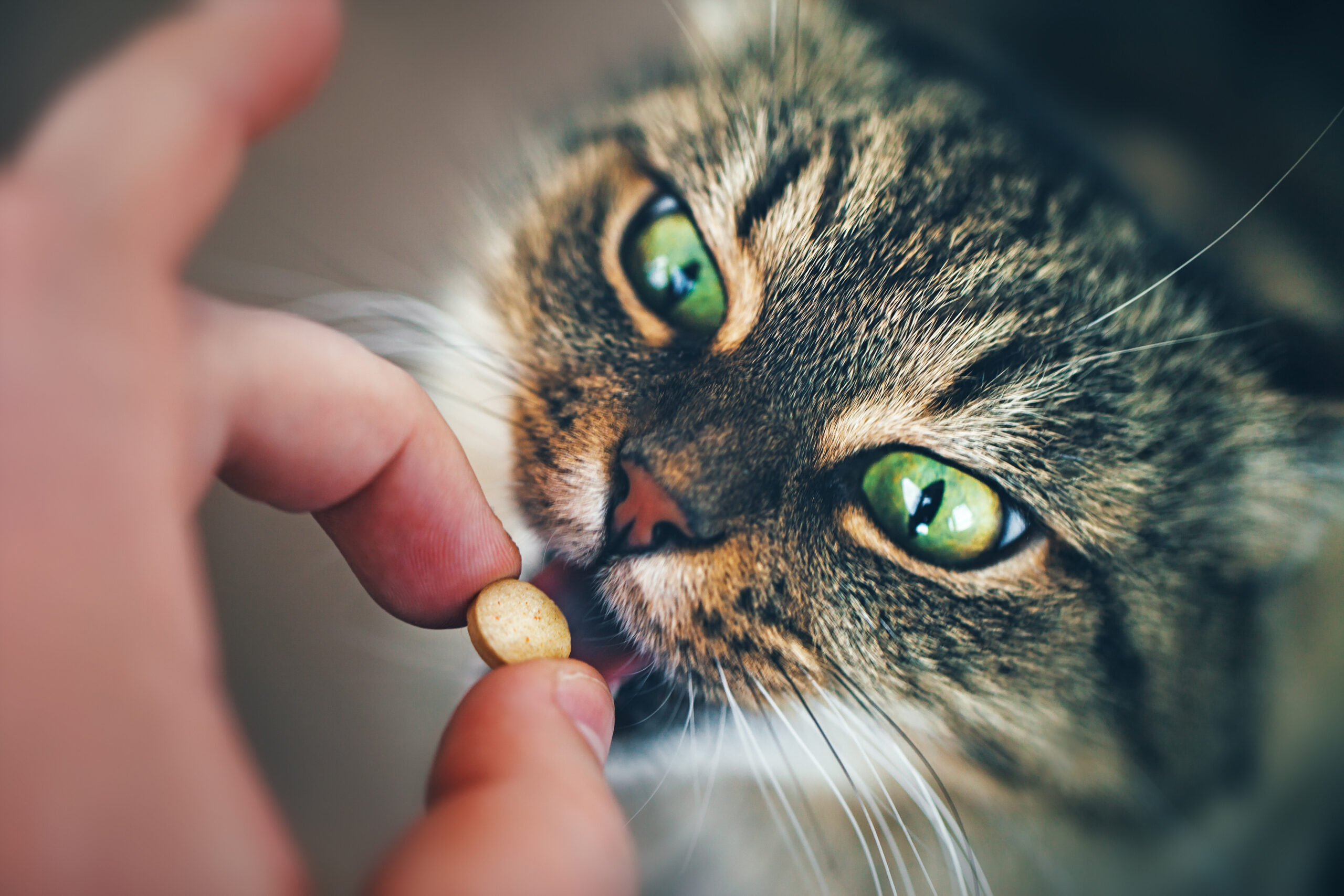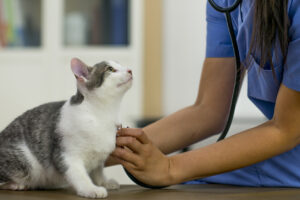What is Ringworm?
Ringworm, despite its misleading name, is not caused by worms at all. Rather, it is a highly contagious fungal infection that can affect the skin, fur, and occasionally the nails of dogs and cats. Understanding the signs, treatment and prevention of ringworm is essential for every pet owner, as it poses a risk not only to our furry companions but also to ourselves and other animals.
Ringworm, scientifically known as dermatophytosis, is a fungal infection caused by various species of dermatophytes the most common of which being Microsporum canis. Contrary to its name, ringworm doesn’t always manifest as a circular lesion. It can appear as red, scaly patches with hair loss, and can spread to other areas of the body if left untreateated.
Signs & Symptoms
Ringworm occurs most frequently in cats (under one year old) and in dogs (under three years old), as noted in PetSure claims data in 2022. Common signs in both species to be aware are circular patches of hair loss, flaky, or crusty skin. Redness and itching can develop, especially when there is secondary infection with bacteria. It is sometimes possible, depending on the species of ringworm for it to “glow” when examined under a Wood’s lamp. The Wood’s lamp emits ultraviolet light that causes infected hairs to fluoresce, which can aid in the detection of ringworm. Sometimes Ringworm infects the nails and nail beds. Affected nails may appear rough, scaley and even grow abnormally. It is important to note that humans can also catch ringworm from infected pets, leading to similar skin lesions.
Diagnosis
Proper diagnosis is crucial to effectively manage ringworm in dogs and cats. Veterinarians may use a combination of diagnostic tools which may include ultraviolet Wood’s lamp examination, microscopic examination of hair or skin samples and sometimes fungal culture. This is where a sample is taken and grown to see what organisms develop. This might be done in clinic, or the sample might be sent to a laboratory. Fungal cultures and microscopic examinations allow for precise identification of the fungal species involved.
Treatment
Once ringworm is diagnosed, prompt treatment is essential to prevent further spread and aid in the healing process. Treatment options may include topical antifungal medications, oral medications, medicated baths and environmental decontamination. Topical antifungal creams or ointments are often applied directly to the affected areas, while oral medications are prescribed for severe or widespread cases. Medicated baths can help remove fungal spores from the fur and thorough cleaning of the pet’s environment reduces the risk of re-infection. According to PetSure data in 2022, ringworm in dogs had an average claimed cost of $265.00 with the highest claimed cost being $3,856.00. In cats, the average claimed cost for ringworm was $263.00 and the highest claimed amount was $1,588.00.*
Recovery
The duration of ringworm recovery in dogs and cats can vary depending on the severity of the infection and the individual’s immune response. In most cases, following the recommended treatment protocol as well as maintaining great hygiene will lead to successful resolution within a few weeks to a few months. It is important to closely follow the veterinarian’s instructions, administer medications as prescribed and monitor the pet’s progress during the recovery period. Regular check-ups may be necessary to ensure complete eradication of the infection.
Prevention
Pets catch ringworm through contact with other animals with ringworm, or through contaminated items such as bedding or towels. High risk areas for catching ringworm can include kennels and catteries, animal shelters, pet grooming salons and breeder facilities. Keeping young puppies and kittens away from high-risk scenarios can help avoid contact with ringworm. Be proactive if you notice any signs of hair loss or skin problems through regular grooming and checking the hair and skin. That way if your pet contracts ringworm you can address it early. Keep all areas that pets frequent clean, dry and well-ventilated to make the environment less suitable for fungal spores to survive. Disinfect bedding and towels. Avoid contact with infected animals and always wash your hands well with soap and water before and after touching pets.
Frequently Asked Questions
Treating ringworm in cats typically involves a combination of topical ointments or baths as well as oral anti-fungal medications as well as environmental cleansing which can involve isolating the affected cats, disinfecting all surfaces and frequent washing of things like towels and bedding. It is important to continue treatment for the full recommended course which can be quite lengthy. Not doing this, however, can result in recurrence of ringworm.
Humans can catch ringworm through contact with infected pets, especially if there are grazes, cuts, or existing infections on the skin. People who have weaker immune systems may be more likely to be infected with ringworm.
The signs of ringworm in kittens are like adult cats, however they may be more likely to become infected due to their developing immune systems and have widespread infection over many areas of the body. The infection can last a lot longer and healing can be delayed while their bodies try to mount a response to the fungus. Secondary infection by bacteria can also occur in the young feline patient which need additional treatment. Treatment may need to be extended and other support such as nutritional support and stress reduction may also be required to help kittens recover.
Some of the most common symptoms of ringworm in cats include:
· Hair loss which may be in a circular or irregular patterns with flaky skin
· Skin lesions which may be red, raised, or irritated
· Hairs that appear to be broken or brittle close to the skin surface
· Flaky skin that may look like dandruff
· Itchy and irritated skin that cats may be grooming or scratching at
· Nail problems which may include brittle or crumbly claws
It is important to note that some cats may be chronic ringworm carriers and display no visible symptoms of infection.
Because it is highly contagious and can also be spread to humans, it is highly recommended to consult a veterinarian for proper diagnosis and prompt treatment specific to your pets’ condition and needs.
According to PetSure data in 2022, ringworm in dogs had an average claimed cost of $265.00 with the highest claimed cost being $3,856.00. In cats, the average claimed cost for ringworm was $263.00, and the highest claimed amount was $1,588.00.*
Ringworm is generally covered by comprehensive accidental injury and illness pet insurance policies administered by PetSure (check our brand partners at petsure.com.au/partners), unless related to a pre-existing condition or exclusion.**
* Reimbursement for these claims would be subject to limits, such as annual benefit limits or sub-limits, benefit percentage, applicable waiting periods and any applicable excess. Cover is subject to the policy terms and conditions. You should consider the relevant Product Disclosure Statement or policy wording available from the relevant provider. Treatment relates to Heartworm and all medically related conditions in that policy period.
** Insurance products are issued by The Hollard Insurance Company Pty Ltd ABN 78 090 584 473, AFSL 241436 (Hollard) and/or PetSure (Australia) Pty Ltd ABN 95 075 949 923, AFSL 420183 (PetSure) (from 8 May 2023 only), administered by PetSure and promoted and distributed through their authorised representatives and distribution partners.
Any advice provided is general only and does not take into account your individual objectives, financial situation or needs. Cover is subject to the policy terms and conditions. Please consider the Product Disclosure Statement (PDS) to ensure this product meets your needs before purchasing or choosing to continue with the product. PDS and Target Market Determination available on our partners’ websites. Meet our partners at petsure.com.au/partners.
References
Superficial Mycoses in Dogs and Cats
Pet insurance can help by covering a portion of the eligible vet bill if the unexpected happens. Because it is difficult to predict the costs of veterinary care, it can help to have measures in place to help prepare for the unexpected. Check out our partner network and explore our policy tools to find a pet insurance policy.
Not all conditions or items are covered by Pet Insurance. Refer to the applicable Product Disclosure Statement for information about coverage and exclusions.



 Fact checked
Fact checked





